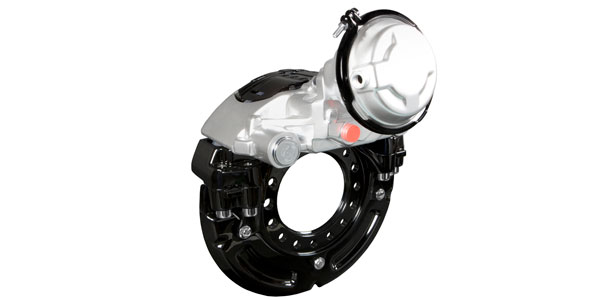Air disc brakes (ADBs) have steadily carved out a bigger piece of the braking market for themselves over the past few years. The growth of ADBs has been steady and is showing no signs of slowing down; if anything, we should expect an increase in ADB market share, thanks in no small part to the fact that several truck OEMs have made air disc brakes standard equipment on their Class 8 models.
With this in mind, FE spoke with Jon Morrison, president of WABCO Americas, on this burgeoning trend, how popular he sees ADBs becoming, and what fleets need to know when deciding between this popular new option and the tried-and-true drum brakes.
Fleet Equipment (FE): What are the percentages of air disc brake spec’ing you’re seeing lately?
Jon Morrison (JM): Air disc brakes [ADBs] continue to gain popularity in nearly all heavy-duty on-road applications. Currently, approximately 20% of commercial vehicles are equipped with ADBs, and penetration for trailer ADBs is about 15%. We expect ABD penetration for trucks to increase to about 30% and trailers to increase to about 25% in the next couple of years, and both will continue to grow share.
Part of the reason we expect ADB penetration to increase is because drivers and maintainers are realizing the benefits ADBs have over drum brakes. in addition, ADBs are a vital part of today’s advanced driver assistance systems such as WABCO’s OnLaneAssist lane keeping and OnGuardMax collision mitigation system and they enable higher automation. ADBs like WABCO’s Maxxus, combined with active steering, lay the foundation for platooning and support advanced functions necessary for autonomous driving.
FE: Several OEMs are now offering air disc brakes as standard equipment— how do you see this affecting market penetration and acceptance of ADBs, especially for trailers?
JM: OEMs offering ADBs as standard equipment certainly is going to help increase market penetration. The more that drivers and maintainers are exposed to ADBs, the more they appreciate them.
Drivers quickly realize ADBs’ benefits versus drum brakes, namely shorter stopping distance and a feel that is more like that of a car.
Maintainers also like ADBs because they have fewer parts and faster maintenance than conventional drum brakes. For example, WABCO’s Maxxus for trucks and Maxx22T for trailers have 25% fewer parts compared with other ADBs available in the market today, and they feature superior reliability, faster serviceability and expanded service intervals up to twice that of traditional drum brakes.
As we see more ADBs on trucks, we will naturally see an increase in market penetration on trailers. Having a combination of brakes, such as disc brakes on the tractor and drum brakes on the trailer, can impact stopping distance and overall performance. Using comparable brakes on the tractor and trailer ensures compatibility and optimal effectiveness.
FE: What would you say to fleets who still have concerns about ADBs?
JM: Any apprehension about ADBs can be eliminated by looking at the benefits.
Compared with today’s drum brakes, WABCO ADBs:
- Reduce stopping distance up to 10% while almost eliminating brake fade;
- Are designed with proven single piston technology with 25% fewer parts, offering superior reliability
- Extend service intervals up to two times versus drum brakes;
- Enable technicians to exchange brake pads four times faster than the linings of a drum brake; and
- Have lower maintenance costs, as a result of the extended service intervals and the faster pad exchange.
The payback for fleets averages less than two years.














